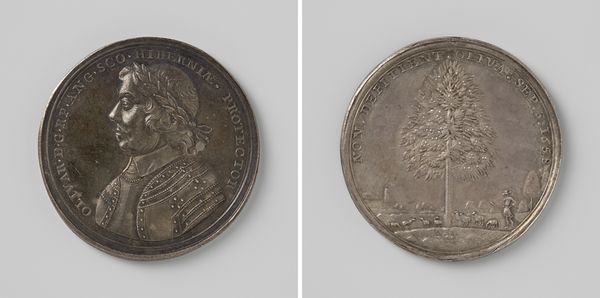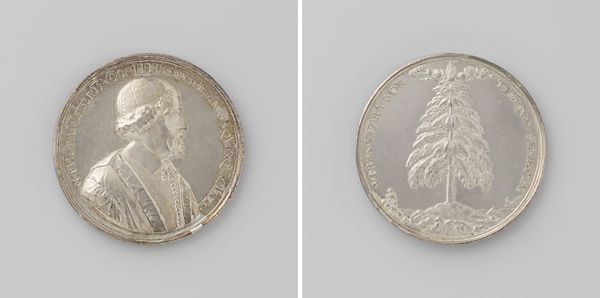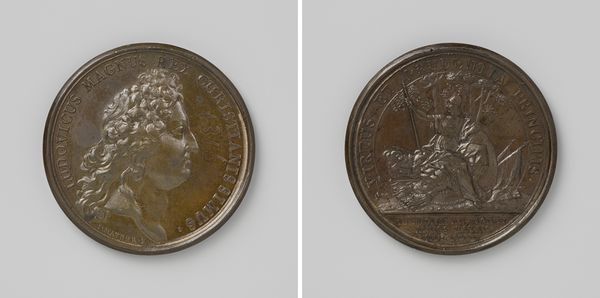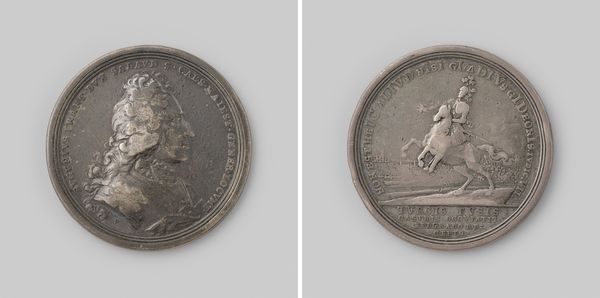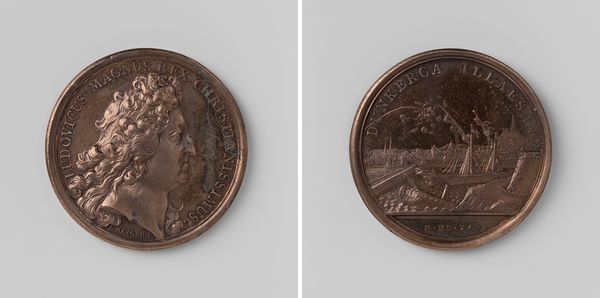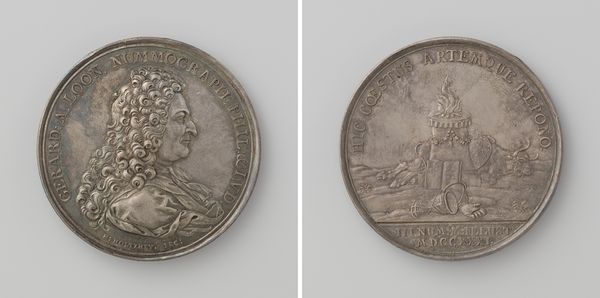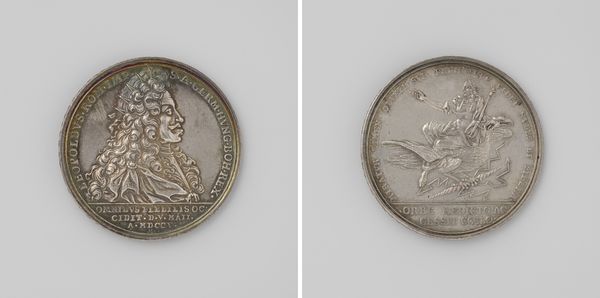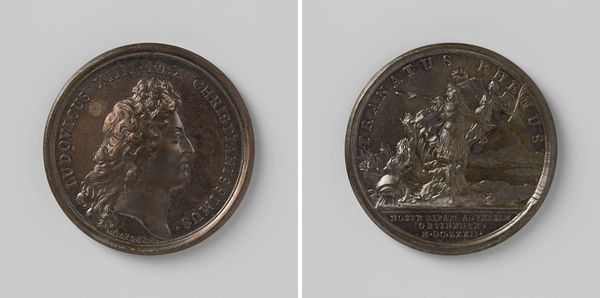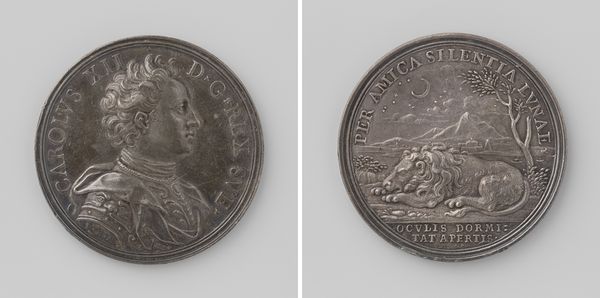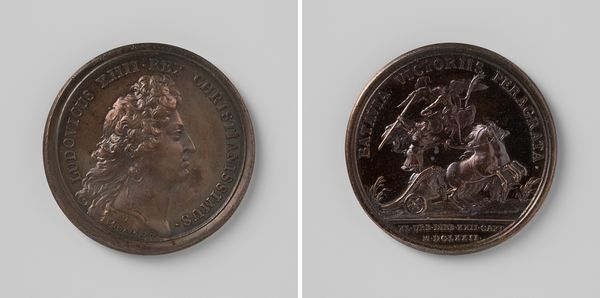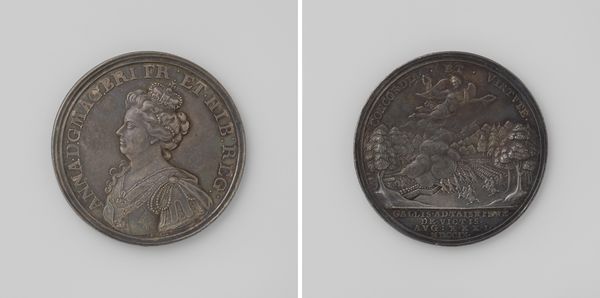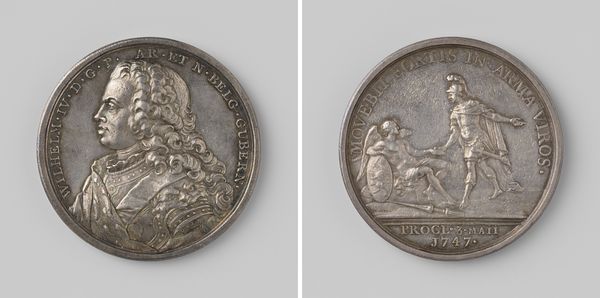
metal, relief, sculpture
#
portrait
#
baroque
#
metal
#
sculpture
#
relief
#
sculpture
#
history-painting
Dimensions: diameter 4.8 cm, weight 45.49 gr
Copyright: Rijks Museum: Open Domain
Curator: What a fascinating object. This is "The Death of Oliver Cromwell", a metal relief created in 1658. It's currently held at the Rijksmuseum. Editor: Wow, it's somber, isn’t it? Even though it's small, that stark relief portrait just exudes a sense of heavy finality. Like a coin to pay the ferryman, but grander, almost propagandistic. Curator: Indeed. Its size belies its historical significance. It was created shortly after Cromwell’s death to, in some ways, immortalize and legitimize his role as Lord Protector. Look closely at the laurel wreath; a clear allusion to classical authority. The imagery surrounding him works to fashion him as a noble figure, deserving of his place. Editor: Absolutely, and juxtapose that official-looking portrait with the other side. That olive tree with sheep nestled at its roots... it has such an Arcadian feel. What's that figure, a shepherd? It creates a lovely little scene. Is this an effort to create a before and after dichotomy in Cromwell’s story? The front depicts the man; the back speaks of the world he left behind, maybe? Curator: I think you are quite right. "Non Deficient Oliva", the motto inscribed next to the olive tree, which translates to "The Olive will not fail," hints at a future peace and prosperity under Cromwell’s legacy and the shepherd keeping watch, alludes to stability in leadership. Remember, the death of a leader is also often an opportunity to cement one's power and narrative. It is worth exploring how, exactly, his reign set up those expectations for continuity for his party. Editor: You’ve got me thinking of how death portraits in any medium so easily slip into glorification. It's tough to grapple with this from today’s point of view without understanding the full implications of Cromwell’s impact on, say, Ireland. I wonder if audiences were quite as enamored of the “stability” he supposedly left behind. Curator: Precisely. To consider Cromwell only in this way sanitizes history. The nuances are many, especially when thinking of gendered and raced implications within the very narratives weaved during his time, the visual representation within and reception by Irish communities... All crucial elements to explore. Editor: You know, getting to look at the front and back together in this metal artwork offers a unique chance to understand all these visual arguments that have kept swirling about the story and significance of his legacy over the years. It’s a relief in every sense!
Comments
No comments
Be the first to comment and join the conversation on the ultimate creative platform.
